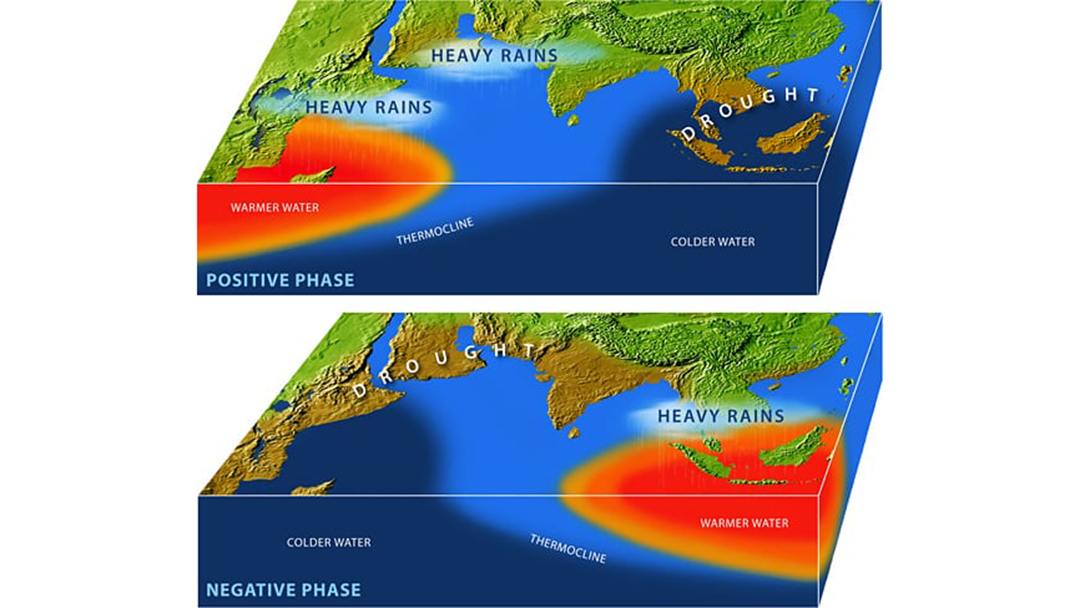by Commander Bhanu Abeygunawardhana
Published on The Morning on 29th July 2024.
Introduction
Indeed, as we know, the ocean covers 70 per cent of the earth's surface. Importantly, Oceans have become the heart of our planet because they sustain marine habitats, give us oxygen, absorb 25 per cent of Carbon dioxide, and use their vast network of flowing currents to control the temperature on a worldwide scale. However, at present entire world is experiencing the impacts of rising Sea Surface Temperature (SST) creating numerous negative impacts on the coastal states and the entire planet.
Moreover, Sri Lanka as an island nation located within the middle of the Indian Ocean (IO) has significant land preachers and experiences unique tropical weather patterns throughout the year. On the other hand, the Western coast of the country is open to the Arabian Sea while the Eastern Coast is open to the Bay of Bengal. Indeed, latitudinal location, various modulations of the Intertropical Convergence Zone (ITCZ) and monsoon weather phenomena are identified as prominent factors which are influencing the climate of the country. In particular, different ocean circulation patterns, currents and gyres take place in two different ocean areas such as the Arabian Sea and the Bay of Bengal are affecting for country’s climate in several ways. Hence, an understanding and monitoring of natural phenomena taking place in the IO is much required since the country is located middle of it. Also, continuous monitoring of the natural phenomena taking place in the IO is paramount for identifying, understanding, predicting and initiating prompt actions for mitigations.
Importantly, it was believed that the impacts of the El Nino-Southern Oscillation (ENSO) and Madden Julian Oscillation (MJO) are the two major natural phenomena influencing the IO and which is affecting the change climate pattern of Sri Lanka as well. However, recent studies have identified that the Indian Ocean Dipole (IOD) is the most significant natural phenomenon occurring within the IO, which has created direct and indirect impacts on climate changes of the IO rim countries since the post-1980s. Indeed, IOD is a relatively new natural phenomenon identified which creates numerous impacts for the IO rim countries. Also, it has been identified that there are numerous direct and indirect influences by the IOD to Sri Lanka as well. However, it has been explored that, the citizens of Sri Lanka do not have much conversions with the phenomenon of IOD even though it creates tangible long-term and short-term impacts on the country. Indeed, current understanding and forecasting of the IOD is much required for Sri Lanka when considering the geographical location in the middle of the IO.
What is the Indian Ocean Dipole (IOD)?
In particular, a climatic event that takes place in the IO is called the Indian Ocean Dipole (IOD). The differential in sea surface temperatures (SSTs) between the Indian Ocean's Eastern and Western portions is also known as the IOD. Likewise, the temperature and weather patterns in the surrounding areas, which include portions of Australia, Southeast Asia and Africa, can be greatly impacted by the IOD. Furthermore, warmer-than-average SSTs to the western part of Indonesia and colder-than-average SSTs off the east coast of Africa are the main drivers of the IOD's negative phase.
In particular, this arrangement of sea surface temperatures supports regular circulation. On the other hand, Warmer-than-usual SSTs off the African coast and colder-than-usual SSTs to the western part of Indonesia are the main drivers of the IOD's positive phase. Easterly winds build up throughout the equatorial Pacific, reversing the normal circulation caused by this arrangement of surface sea temperatures of IOD. For instance, droughts in Indonesia and southeast Australia, stronger-than-normal summer monsoon rainfall, and floods in East African nations are some of the effects of an extremely positive IOD. Also, the IOD is intensifying locust swarms in Africa and exacerbating Australian bushfires. The below figure expresses the phenomenon of IOD;

Figure: Positive and Negative Phases of IOD
Source: www.whoi.edu
Significance of IOD for Sri Lanka
More importantly, since Sri Lanka is in the middle of the IO, the country is very vulnerable to the various climate influences made by the IOD. In particular, positive and negative IOD will significantly influence the rainfall pattern and drought in Sri Lanka. Indeed, it has been identified that during the positive IOD rainfall increases and the negative IOD decreases the rainfall of the country. For instance, the wet zone of Sri Lanka experiences a significant rainfall increase during the positive IOD, which causes flash floods, damage to the agricultural sector, infrastructure and property damage. However, it is possible to distinguish between three different types of IOD events affecting Sri Lanka such as, unseasonal, normal, and prolonged. For instance, they are defined as those that develop and mature primarily within the months of the June-July-August season and the months of September-October-November season.
With that, it has been identified that annually June to December in Sri Lanka is vulnerable to the impacts of IOD. On the other hand, positive IOD increases the precipitation in the wet zone of the country also covering the Western, Southern, Central, Northcentral and Sabaragamuwa provinces while negative IOD causes increased drought in the dry zone of the country. Indeed, IOD hurts the agricultural sector of the country during the both “Yala and Maha” cultivation periods either positive or negative phases occurring from June to December. For instance, heavy rains and drought similarly affect the agricultural sector of the country which shall challenge the national security of the country in terms of human, food, economic and health security.
In particular, IOD is driven by the differential SST occurring in West and South-East IO. Indeed, differential SST shall create several impacts on the easterly and westerly wind circulation and ocean circulation pattern within the Indian Ocean Region (IOR). Importantly, the geographically centralized location of Sri Lanka within the IO is directly impacted by the change in wind circulation and ocean circulation creating unpredicted rainfall and drought including weather and climate changes. Likewise, ocean circulation and wind circulation impact the coastal upwelling. Importantly, the southern coast of the country is significant and the primary location of upwelling taking place throughout both monsoon seasons. Indeed, during the southwest monsoon, higher amounts of surface chlorophyll were noted. On the other hand, upwelling raises frigid waters rich in nutrients to the surface, promoting the growth of seaweed and phytoplankton blooms.
Moreover, large populations of animals higher up the food chain, such as fish, marine mammals, and seabirds, rely on the phytoplankton blooms as their primary source of energy. In particular, upwelling taking place during the positive IOD creates a good fishing ground for the fisherman. However, the absence of fishing grounds during the negative IOD shall create impacts on national security as well in terms of food, health, economic and social security when considering the large fishing community of the country.
Conclusion and the Way Forward
In contrast, oceans are considered the heart of our planet for various reasons. In particular, as an Island nation, located middle of the IO has a significant influence from the surrounding water body of the IO. Importantly, resonant studies have explored that the Indian Ocean Dipole (IOD) is the most prominent natural phenomenon impacted by the IO rim countries since post 1980s. Indeed, from June to December, positive or negative IODs are influencing the climate of the country. Moreover, positive IOD increases the rain while negative IOD decreases the rain. Indeed, increases in rainfall cause floods while decreases in rainfall cause drought. Since the majority of the agricultural sector of the country depends on rainwater for cultivation, higher rainfall or less rainfall creates huge impacts on the agricultural sector of the country. Which affects for food, economic and health security of the country. Also, coastal upwelling increases during the positive IOD and helps to increase rich fishing grounds near to the shoreline. However, it was found that the knowledge about IOD among Sri Lankan citizens is very limited even though IOD is the most influencing and significant weather phenomenon occurring in IO and has a direct and indirect on the country in various ways. Finally, it has been identified that IOD can influence the national security of the country in terms of human, health, economic and food security. Indeed, regular monitoring of the pattern of annual IOD pattern is mandatory. With that, planning and initiating quick action on HADR, improving agriculture productivity, mitigation, weather forecasting and modelling can be done effectively to secure the national security of the country.
Link to the original source : Click here

* Commander Bhanu Abeygunawardena is a Military Research Officer at the Institute of National Security Studies (INSS), the premier think tank on National Security established under the Ministry of Defence. The opinions expressed are his own and not necessarily reflective of the institute or the Ministry of Defence.